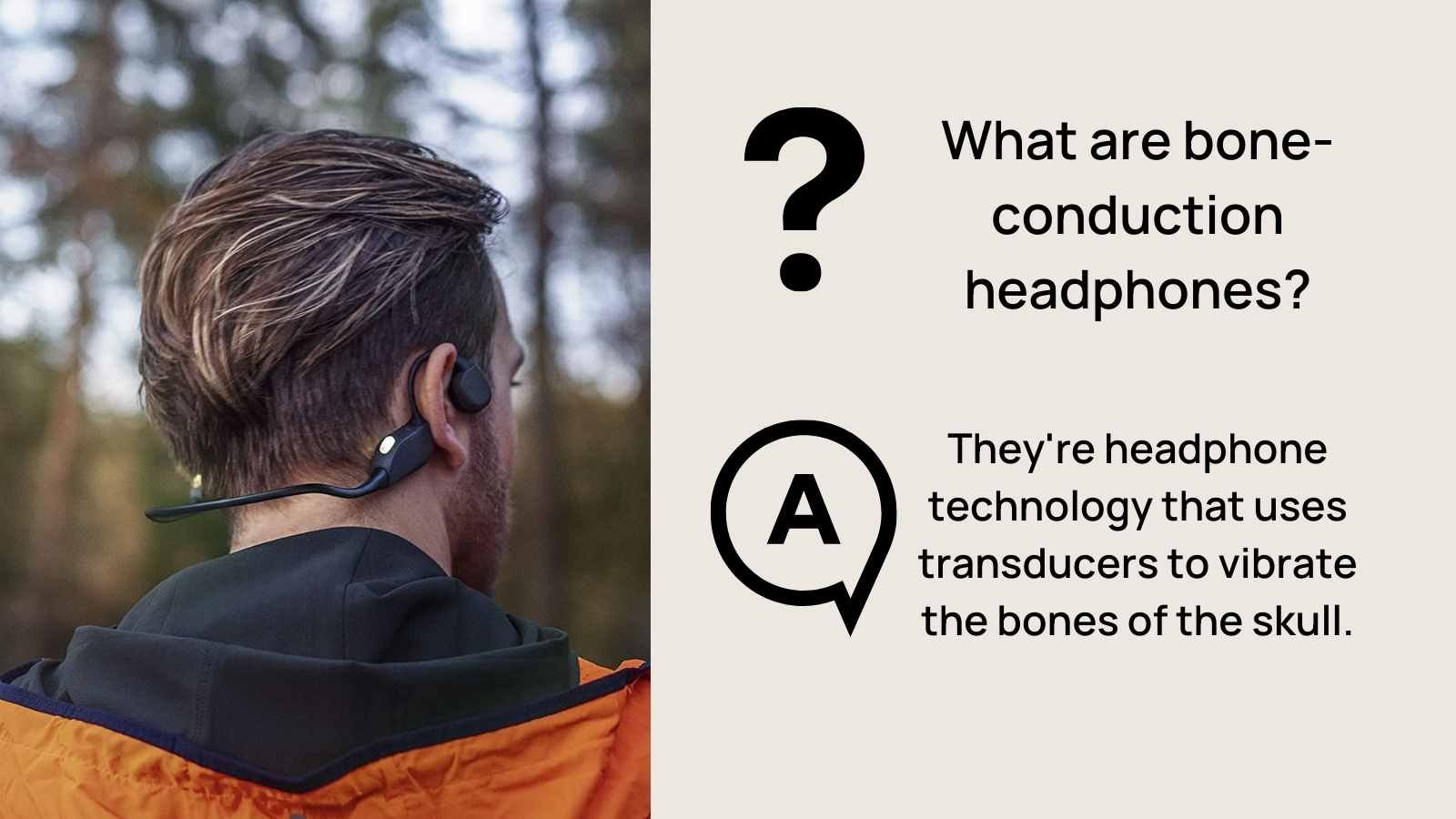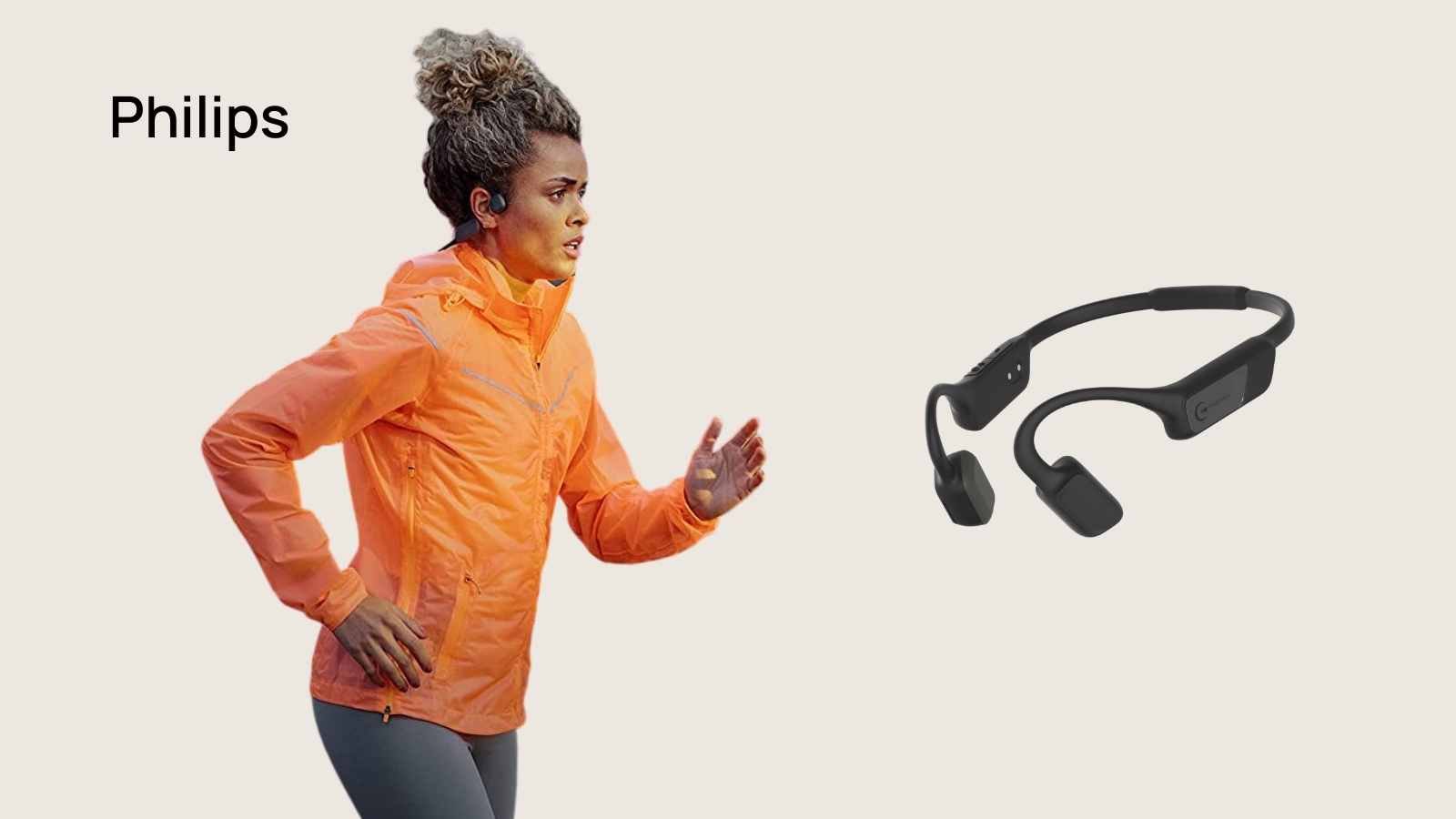Have you ever considered how sound travels through your body to reach your ears? How does it vibrate through the bones of your skull and then into your inner ear?
This is the concept behind bone conduction technology, and it's a type of audio transmission that uses transducers to transmit sound waves directly through the bones of the head, bypassing the outer and middle ears. This means that with bone-conduction headphones, you can enjoy music without blocking off your ears or covering them up. But, are they better than regular headphones? Let's look at what you need to know about this emerging tech.
As an audiologist, patients often ask me about bone conduction versus traditional air conduction headphones. Which is better? Which is safer? The answer is: It depends.
There are times when bone conduction is better, for example, when needing to hear your surroundings. Other times, blocking out background noise and using noise-canceling headphones is advantageous. A compromise? There are also products, such as the AirPods Pro, that allow "transparency mode" to hear your surroundings while listening to music or other audio. Let's explore what bone-conduction headphones are and what exactly you need to know.
Prefer to watch?
Our full breakdown of bone conduction safety here. 👇

Want to test your hearing? We built an accurate, 5-minute hearing test that returns instant results through an interactive audiogram-style chart. Grab a pair of headphones and give it a try!

What are bone-conduction headphones?

Unlike traditional headphones, bone conduction headphones are headphone technology that uses transducers to vibrate the bones of the skull rather than sending sound waves via air into the ear canal. The inner ear is housed behind the mastoid bone in the skull, and this headphone sends vibrations through the bones, and the inner ear receives the sound as a result. This method bypasses the outer and middle ears, meaning you can hear music without blocking off or covering your ears. The transducers are usually placed behind the ear, where vibrations travel best to the inner ear.
Are bone-conduction headphones better?

You might be wondering whether bone-conduction headphones are better than regular headphones. The answer depends on what kind of experience you want.
While regular headphones provide excellent sound quality, they also block out external noise and that can be beneficial in certain situations but can also be dangerous (aka, when running or biking and need to be aware of traffic or other potential hazards). Bone conduction headphones allow you to keep your natural hearing while still enjoying music or audio content, making them an ideal solution for people who need to stay aware of their surroundings. For example, runners who want to hear oncoming traffic or pedestrians can use bone-conduction headphones to remain alert.
Bone conduction technology works best for those who want to hear their surroundings. However, if you're in a noisy setting (e.g., a busy urban setting), you'll wish to have noise-canceling technology that seals off the ear to block out noise. Another reason for bone conduction headphones? Some patients have sensitive ear canals or other ear conditions (e.g., chronic ear infections), which means the ear canal is best left unoccluded with headphones.
How can I manage the volume with open ears?
Even though bone-conduction headphones don't block off your ears, they can still damage your hearing if used improperly or at too high a volume. Finding a comfortable listening level that won't damage your hearing over time is essential when using bone-conduction headphones. Ideally, you'll want to keep the headphone volume at most 70% of the maximum volume.
Remember that while the headphones don't cover your ears, they stimulate the inner ear directly and can still do damage at high-level volume. Additionally, many apps available on both iOS and Android devices will monitor the loudness of your device to prevent any potential damage from occurring due to excessive sound levels over extended periods.
What are the best bone-conduction brands?

When shopping for bone-conduction headphones, there are many options on the market, and it's essential to research them before selecting a brand. While bone conduction headphones' sound quality differs from traditional headphones, some brands have more bass sound than others. Here are some of the most popular brands:

1. Shokz Open Run Pro
.jpg)
These bone-conduction headphones are known for their rich bass sound, which is great for motivation when you're on a run. Additionally, their lightweight headset provides comfort, excellent sound quality, and Bluetooth capability. Another perk: If you forget to charge your headphones, this product offers an impressive 1.5 hours of play on a five-minute quick charge.
Get Shokz On Amazon - $179

2. Philips TAA6606BK

This pair of bone conduction headphones have several features that are great for outdoor exercise. If you enjoy an early morning or evening run, turn on the LED lights for added visibility. Plus, their sweat and dust-resistant rating makes them an excellent option for outdoor activities.
Get Philips On Amazon - $106

3. Mojawa Mojol
.jpg)
These headphones comfortably stay in place, and their larger headset that rests just in front of the ear offers great bass sound with less leakage. With their water and dust-resistant design, these headphones are fit for outdoor adventures.
Regardless of your choice, you'll want to ensure a comfortable fit and features that fit your needs. For example, LED lights, sound quality, or volume controls (e.g., buttons versus app controls).
Get Mojawa Mojol On Amazon - $109

Are Bone Conduction Headphones Safe? - Final Thoughts
Bone conduction technology offers a unique way for people who want access to audio content while still being aware of their surroundings—or prefer not to have headphones in the ear.
If you choose bone conduction headphones, you'll want an option to listen comfortably without compromising safety or sound quality. Remember that the overall volume is the key to headphone safety, regardless of air conduction or bone conduction.






